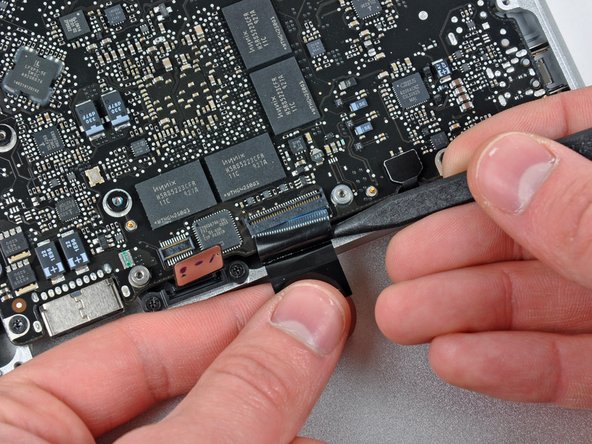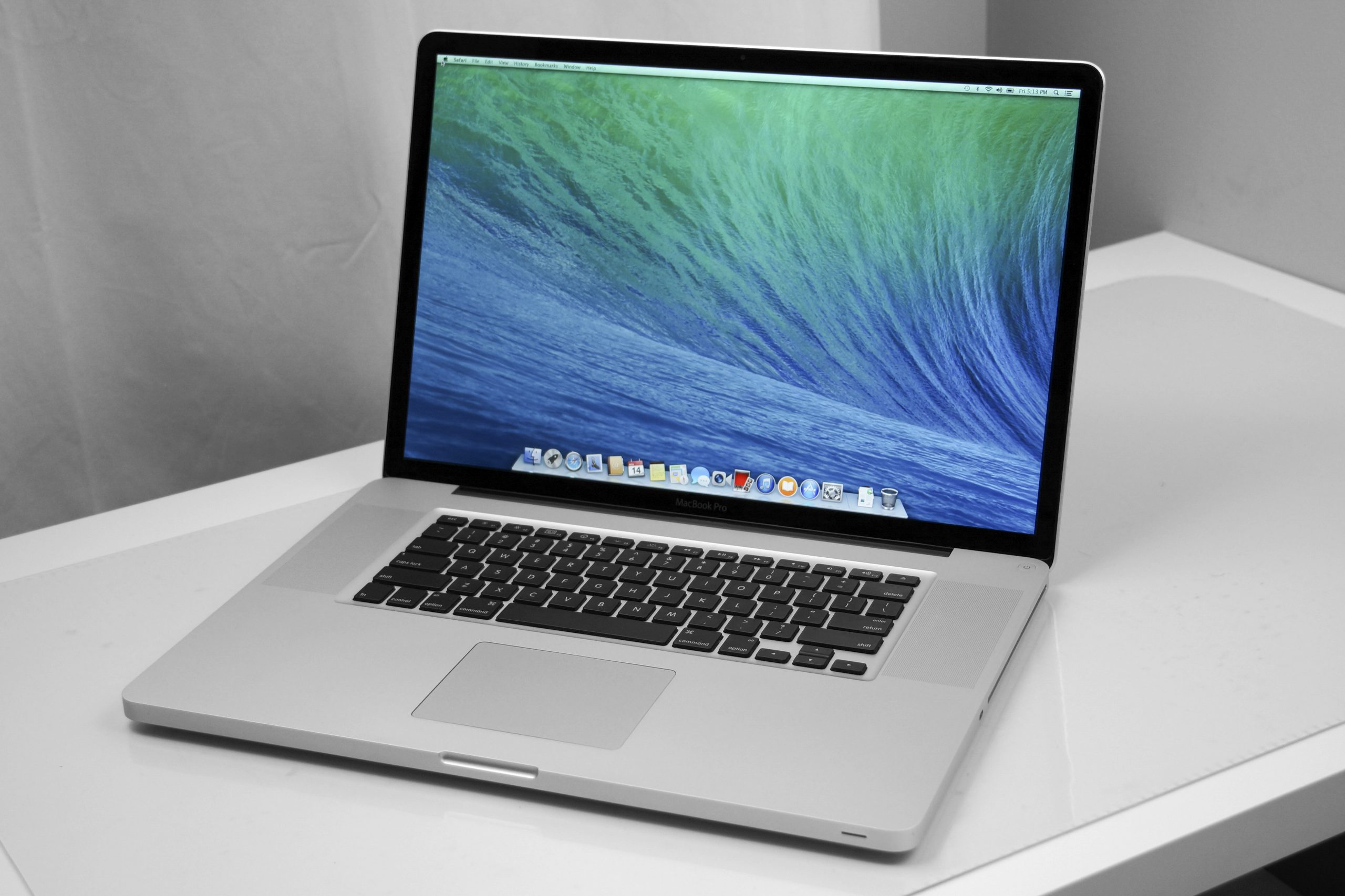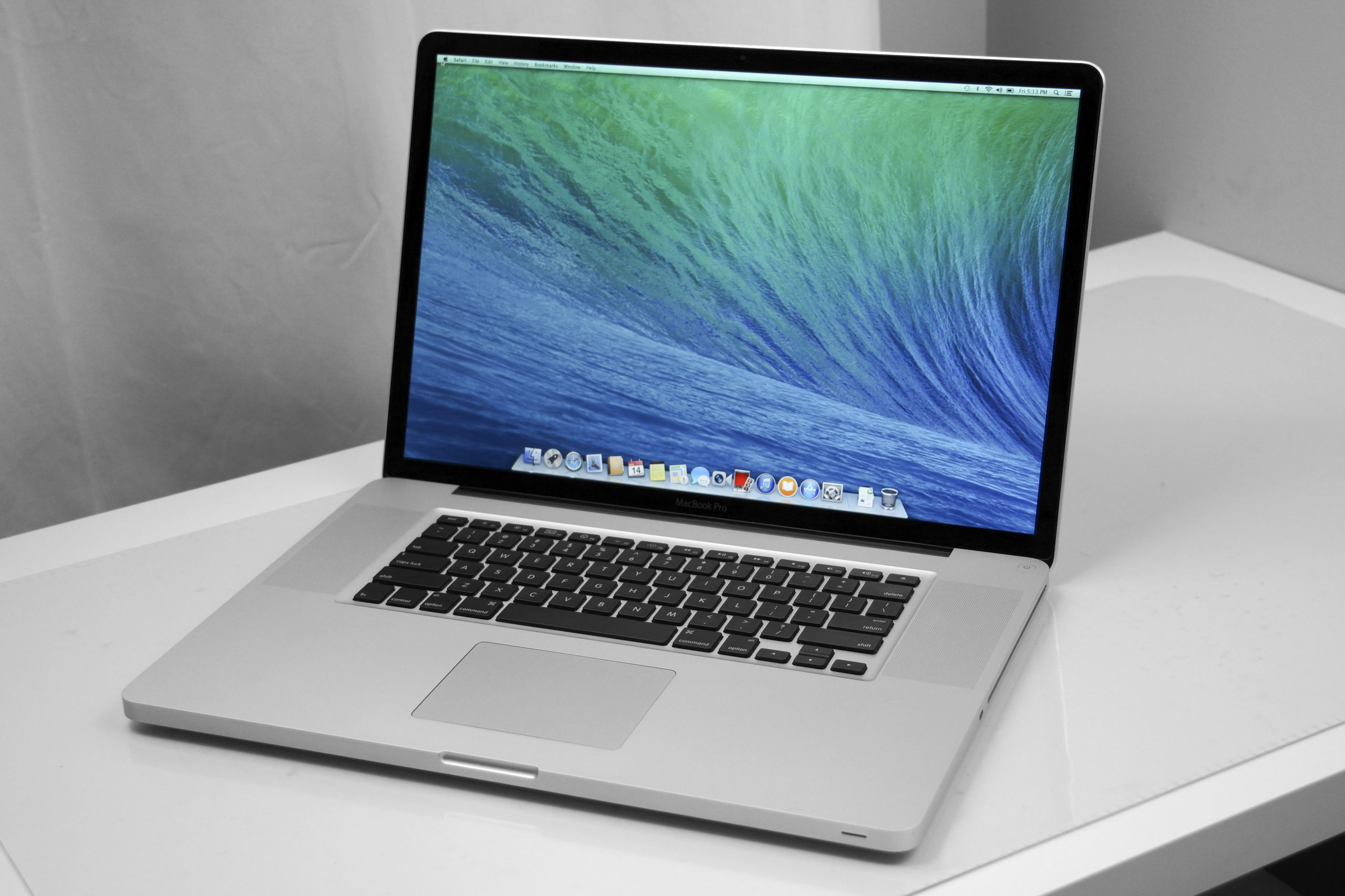How to Replace MacBook Pro 15 Logic Board Tutorial
Duration: 45 minutes
Steps: 36 Steps
Hey there, repair champ! Just a friendly reminder to take your time and follow each step carefully. If you hit a snag, don’t hesitate to ask for help. Remember, if you need assistance, you can always schedule a repair.
Ready to give your device a new brain? It’s time to swap out that old logic board with a fresh one! Let’s get your device back on track with this easy repair step.
Step 1
– Let’s get those ten screws out that are holding the lower case tight against the upper case!
Step 2
– With a little finesse, use both hands to gently lift the lower case near the vent, popping off those two clips that are keeping it snug against the upper case.
– Once those clips are free, carefully remove the lower case and place it somewhere safe for later!
Step 3
No need to stress about following steps 3-6 to get that battery out while swapping the hard drive! Just remember, it’s a good idea to unplug all power sources from your devices before diving in. Happy repairing!
– Time to get your toolkit ready! Start by unscrewing those two 5-Point Pentalobe screws at the top edge of the battery. You’ve got this!
Step 6
– Gently tilt the battery back just enough to reach that sneaky battery cable connector.
– Carefully pull the battery cable connector away from its cozy socket on the logic board and release the battery from the upper case.
Step 7
– Grab your trusty spudger and gently lift the fan connector straight up from the logic board. You’ve got this!
– For an extra boost, give that spudger a little twist from underneath the fan cable wires to help pop the connector loose. Easy peasy!
Check out the second and third pictures to spot the fan socket and connector! Just a heads up: when you’re using your spudger to gently lift the fan connector straight up and out, be super careful not to snap that plastic fan socket off the logic board. The layout in the second picture might look a bit different from your device, but don’t worry—the fan socket is still the same. If you need help, you can always schedule a repair!
Tools Used
Step 8
– Unscrew those three T6 Torx screws holding the left fan snugly to the logic board.
– Gently lift the fan out of the upper case and give yourself a pat on the back!
Step 9
– Grab your trusty spudger and gently slide the flat end underneath the left fan connector to pop it off the logic board. You’ve got this!
– Carefully pry up from below the wires, taking your time to avoid any mishaps.
Tools Used
Step 10
– Unscrew those three T6 Torx screws holding the left fan snugly to the logic board.
– Gently lift the left fan out of the upper case and give it a little wiggle if it’s feeling stubborn.
Step 11
When you’re shifting the strip (cable retainer) aside, just a friendly reminder: watch out for those tiny surface-mounted components on the logic board—let’s keep them intact!
Gently pull the connector parallel to the face of the logic board; it’s a smooth move, not a straight-up lift!
The camera cable connector doesn’t have any fancy locking or snapping features to keep it in place. So, Apple cleverly uses a little strip of black adhesive plastic on the side facing the logic board, right behind the camera cable connector, to hold it snugly in its spot. If you need help, you can always schedule a repair!
– With one finger, press down on the end of the cable retainer while you gently use the tip of a spudger to lift the other end just a bit and swing it away from the camera cable connector.
– Now, go ahead and disconnect the camera cable by pulling the male end straight out of its socket.
Tools Used
Step 12
Gently slide the connector out parallel to the logic board’s surface, rather than pulling it straight up. You’ve got this!
– Now, let’s give that camera cable some space to breathe. Gently guide the male end straight out of its socket like a pro.
Step 13
– Gently slide the flat end of your trusty spudger under the optical drive cable connector and lift it off the logic board with care. You’ve got this!
Tools Used
Step 14
Take your time and gently work on prying the connector, not the socket. You wouldn’t want to accidentally lift the socket off the logic board, right?
Step 15
– Gently use the flat end of a spudger to lift the hard drive/IR sensor cable connector off the logic board. You’ve got this!
Tools Used
Step 16
– Unscrew those two 1.5 mm Phillips screws holding the cable cover snugly to the logic board. You’ve got this!
– Gently lift the cable cover out of the upper case. Easy peasy!
Step 17
– Grab a spudger and gently lift the trackpad flex ribbon cable connector up from the logic board.
Tools Used
Step 18
Hold up! Before you think about sliding that keyboard ribbon cable out of its socket, make sure you’ve unlocked the ZIF socket first. These ribbon cables are like delicate little butterflies, and too much force can easily send them packing. So, take it easy and be gentle!
– Time to show that ZIF socket who’s boss! Gently but confidently lift the locking flap on the ZIF socket for the keyboard ribbon cable. It’s like a little acrobatics act – hook your fingernail under the flap and give it a vertical lift.
– Now, let’s gracefully slide out that keyboard ribbon cable. Use the tip of a spudger and slide it out of its socket just like a pro.
Tools Used
Step 19
– Get your trusty spudger and gently lift the battery indicator ribbon cable connector off the logic board.
Tools Used
Step 20
– First up, grab your trusty screwdriver and take out that single 7 mm Phillips screw holding the display data cable retainer snugly to the upper case.
– No worries if that screw decides to stick around in the display data cable ground loop! If you’re swapping out the display, just remember to move that little guy over to the new unit.
– Now, gently lift off the display data cable retainer from the upper case and you’re one step closer to your repair!
Step 21
– Yank on that snazzy plastic tab clinging to your display data cable lock and swing it toward the DC-in side like you’re doing a dance move with your computer.
Step 22
Remember to slide the connector sideways like a smooth dance move, right along the surface of the logic board. No yanking upwards, keep it cool and level!
– Gently wiggle the display data cable connector and pull it straight out of its socket. You’ve got this!
Step 23
– Grab your trusty spudger and gently lift the flap that holds the keyboard backlight ribbon cable in place.
– Now, with a steady hand, pull the keyboard backlight ribbon cable straight out of its cozy socket.
Tools Used
Step 24
Hold your horses! Before you go yanking out the logic board, remember there are some sneaky components on its underside that are still connected to the upper case. Let’s disconnect those first!
– Time to get those screws out! Let’s tackle the following screws:
Step 25
Hey there! Just a friendly reminder: keep that logic board in place for now, okay?
– Gently elevate the logic board assembly from the left side and wiggle it out of the upper case, paying attention to the port side that might snag while you’re lifting it out.
Step 26
– Get that logic board lifted just enough to get some room and then bust out the spudger to pop that microphone off the upper case.
– Gently shift the logic board away from those port openings and lift that assembly right out of the upper case.
– Before you slap that logic board back in, do yourself a favor and press that microphone down snugly into its spot by the left speaker to keep it chill.
Tools Used
Step 27
– Gently slide the logic board away from those pesky port openings and lift the whole assembly out of the upper case like a pro.
– Before you pop that logic board back in, give the microphone a little nudge down into its cozy spot in the left speaker to keep it snug and secure.
Step 29
– Peel away the tiny strip of tape that’s hanging out over the left speaker connector. You’ve got this!
Step 30
Gently lift from underneath the wires.
– Gently slide the flat end of a spudger to lift the left speaker connector from its cozy spot on the logic board.
Tools Used
Step 31
– Unscrew those two 5 mm Phillips screws holding the left speaker snugly to the logic board.
– Gently lift the left speaker away from the logic board and set it aside.
Step 32
Gently lift up from below where the wires are located.
– Gently slide the flat end of a spudger under the microphone cable connector and lift it up from its cozy spot on the logic board. You’ve got this!
Tools Used
Step 33
– Gently pull the DC-In Board connector straight out from its socket on the logic board. You’ve got this!
Step 34
Hey there! Just a friendly reminder: when you’re loosening those screws, give them a gentle nudge—no need to go all Hulk on them!
Make sure to keep an eye on those little springs hiding under each screw as you take them out. They can be sneaky!
– Time to get your screwdriver ready! Unscrew those eight Phillips screws that are holding the heat sink snugly to the logic board. You’ve got this!
Step 35
– Gently lift the heat sink off the logic board like you’re unwrapping a gift. Careful now, we want to keep everything in one piece!
– When you’re putting your logic board back in, remember to slather on a fresh layer of thermal paste on each processor’s face—it’s like giving them a cozy blanket for optimal performance!
Tools Used
Step 36
These little tabs are your chip’s best buddies – they keep it snug and secure. Give them a gentle nudge to let the chip pop up like it’s ready for a dance party!
If you’ve got another RAM chip in the mix, just rinse and repeat this process. You’ve got this!
– Gently coax the tabs on each side of the RAM chip to release by giving them a little nudge away from the chip.
– Once the RAM chip graciously pops up, guide it out of its socket with a steady and loving hand.





















































